How to “Pick the Lock”: The Five Secrets to One Stone’s Success
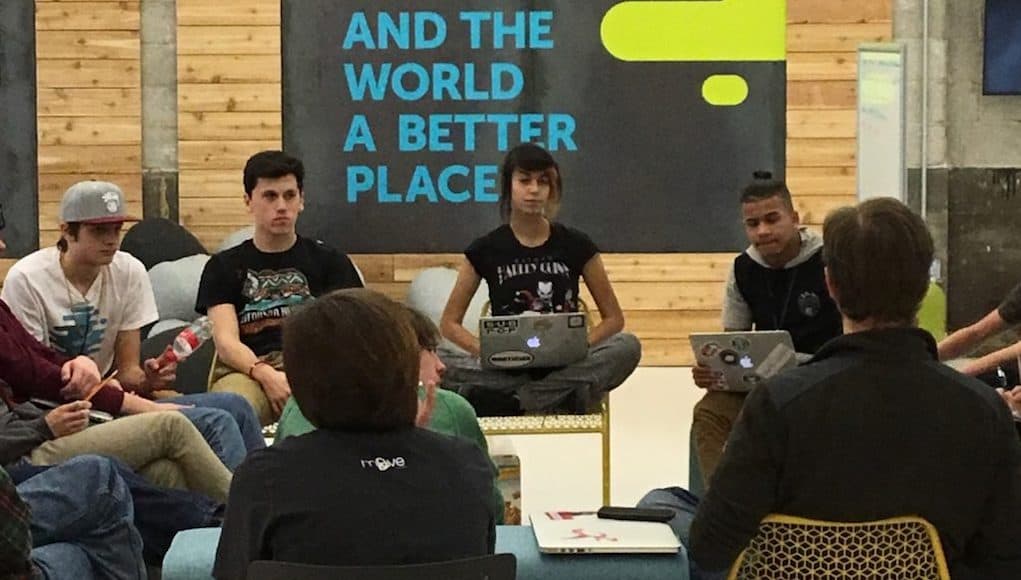
This post was originally published on kylewagner.net.
The Lock Pick Challenge
When 34 eager 15-16 year olds stepped foot inside One Stone’s doors, they weren’t lectured or debriefed on the rules. They weren’t even provided with a tour. Instead, they sat on comfortable bar stools, perched slightly above the table in the Maker’s shed, and listened to the only words they would hear from their learning coach that day:
“Welcome to One Stone. Learning here will look different than it has in the past. I am only here to set up the activities and challenges. You will have to use your own ingenuity to solve them.”
Pacing slowly around the room, the coach masterfully set up the very first challenge they would encounter.
“Each of you has a locker for your supplies.” He deliberately pointed to each of the lockers located around the room.
“But there’s a problem. In our rush to set up the space, we seem to have misplaced the keys. Your task is to pick the locks. You have the rest of the week to open them.”
Imagine as a student if this was your work for the first week of school. Although I don’t know all of your tastes and preferences, I can certainly predict it would be more engaging than any other first week of school you witnessed.
The OneStone LX Summit
Just three short days ago I had the privilege of visiting OneStone with an amazing group of educators spread across the country. Some of the leaders had started their own foundations; others, after school programs to instill and enhance creativity in students; some, founding principals of progressive public and charter schools; and even more, editors and publishers of innovative education magazines.
The one thing we all had in common: We were interested in exploring ideas, schools and programs that do school different.
One Stone certainly does school different.
This small “micro-school” looked nothing like any other school you have seen. With writable walls, flat screen TVs, movable furniture, a small amphitheater and garage doors to separate makeshift maker spaces, the space resembled what you might see at Google or Facebook headquarters.
The school’s mission:
“Making students better leaders and the world a better place.”
This simple yet profound statement seeped into everything One Stone did.
When moving through the space, you were hard pressed to find an adult. Instead, what you did observe were students who owned and directed their own learning. Small groups gathered around a table, curious as to how to help local immigrants better assimilate to society. Others working independently, iterating and re-evaluating automobile designs for a local design challenge.
Yet despite its clear success, One Stone was not interested in highlighting what it did exceedingly well. Instead, it was focused on its growth.
As it did with students, One Stone challenged us as “advisors” to help design solutions to some of its most pressing challenges: How do we grow and sustain this model? How might we better empower student ownership of learning? How do we prepare students for the real world?
We embarked on a two-day journey together with One Stone students to seek out answers to these important questions.
But instead of sharing answers to these questions, I want to dissect what I believe is even more profound. It’s the “magic sauce” that makes this place so great. Or, for lack of a better metaphor, the secret combination to One Stone’s lock. Here are what I believe to be the five greatest secrets to One Stone’s success.
Secret #1: The Student Run Board
“Individually, we are one drop. Together, we are an ocean.”- Ryunosuke Satoro

What was most remarkable about this place had nothing to do with the bells and whistles of its facility design (of which there were plenty). Schools can invest millions of dollars into a beautiful campus, with no soul or community behind it.
To me, what was most remarkable about One Stone was that it actually entrusted its students to oversee its development.
In its governing by- laws, One Stone has mandated that at least 70% of its overseeing board consists of its students. In other words, 7 out of 10 board members were involved in decision making that directly impacted them.
I have seen several schools that provide students with moderate decision-making power; perhaps a choice of the day’s activities, or as advisors to the adult decision makers; but to put them on the board of oversight- even that’s a stretch for me.
I was initially skeptical. How can students oversee the development of something so complex, important and challenging?
But to quote Tom Vander Ark from Getting Smart, one of the senior advisors and early founder of the Gates for Education Initiatives, it was the “best board he has ever seen.”
What made this board so effective?
Students use design-thinking to engineer solutions to its most pressing issues. Answers to questions regarding space, scheduling, experiences, and discipline are all careful engineered using the same process students undergo in their studies. This clear transfer of learning empowers students to know that they really can be the leaders One Stone hopes they become. (Listen to current and former board members describe board services in this podcast.)
Secret #2: The Process
“Fall in love with the process, and the results will come.” – Eric Thomas
In a city of 250,000 people, you could identify a One Stone student after only a brief conversation. They would ask you a ton of questions about your background, listen empathetically as you discussed the answers, and feel comfortable and confident sharing a bit of their own story. The process they use in conversation is a small window into the process they use in their own learning.
Using design-based thinking, they engineer solutions to some of their community’s most pressing issues. It’s what allowed them to design a play space for younger students on the side of an underused building; or create a visual bicycle repair guide for refugees after seeing many abandoned bicycles on the side of the street.
In this human-centered design process, the learning is a result of the process, not the end goal. In addition, knowing that they can have an immediate impact on their community empowers students to better engage in the process.
They are engrossed in a cycle of continuous iteration, feedback, reflection, re-design, and implementation. Through this process, they see that learning doesn’t end after a summative assessment or at the onset of summer break; but that’s it’s an ongoing and fluid process.
Secret #3: Teacher as Coach
“[Pupils] respond to coaches who really have their best interests at heart.”- Mike Singletary
Imagine if we shifted teaching to be more about the individual needs of the student than the demands of the curriculum.
What if rather than establishing a fixed curriculum or set of standards that all students should know, we adapted our learning goals to the needs of our end user?
One Stone has managed to accomplish this with great success. Moving through the space, you see students working in small groups with an adult coach at their side. His/her job is not to provide the answer, but to help direct students to finding the answers themselves.
As was the case with the “lock pick” challenge, it is the student’s job to discover answers for themselves. With a clear outcome established at the onset of the learning journey, students are provided with the context for a deeper investigation.
Picking a lock requires a great deal of knowledge. It requires an understanding of the engineering principles behind the design; the mathematical principles surrounding possible combinations; and the soft skills of critical thinking and problem solving to synthesize the two.
The adult coach/facilitator of the experience understands the challenges students will face ahead of time, and can set up the experience to allow for the greatest learning. In this way, the learning is not confined to a discrete set of knowledge and skills, but rather, an application and synthesis of the knowledge and skills necessary to successfully solve the challenge.
Secret #4: A balance between core content and 21st Century Skills
“All the world is a laboratory to the inquiring mind.”- Martin H. Fischer

Simply put, One Stone mirrors the process of learning in the real world. Their schedule is a great reflection of this process. Rather than being fixed around discrete learning and skills, it is open and malleable to new experiences and inquiry that takes the project in a new direction. Mornings generally consist of personalized learning and exploration into the learning necessary for the project task or goal; while afternoons are reserved for deeper, hands-on exploration or “design labs.”
This beautiful balance between core content and 21st-century skills allows students to complete projects and design solutions that are in-depth and well-founded.
For example, if students are seeking solutions to local water pollution issues, they might spend the morning researching major waterways, tributaries and industry so that they can better identify a site for water testing to conduct later in the afternoon.
After analyzing the data, more inquiries will certainly arise. When discovering the water is low in dissolved oxygen, they might question what natural remedies help increase levels of oxygen, thereby supporting a greater amount of life.
So often as educators, we equate learning to the number of minutes it is afforded in the schedule. But One Stone understands that learning has less to do with mandated minutes, and much more to do with the design of the learning experience.
Secret #5: Thoughtful Relationships
“No significant learning can occur without a significant relationship.”- James Comer

Positive relationships are the cornerstone of One Stone’s success. And trust is at the center. In two days, I witnessed more openness, vulnerability and trust than I have seen in an entire year of teaching.
Adults were asked to be honest about their shortcomings in the same way they expected students to be.
As “advisors,” we were not the “experts,” tasked with recommending a strategy for One Stone based on our experience, but rather participants of a greater, more holistic discussion.
This flat leadership model created a sense of community that permeated the One Stone space.
For example, when discussing how to scale the One Stone model, everyone had a seat at the table. Students, coaches and advisors all sat at the table together, listening actively to others’ ideas and sharing when they felt they had something valuable to contribute.
The end goal was not to discover the answer, but instead, to come to a better understanding of the challenge and how to best address each aspect.
In Closing
Three days later, I am still in shock and awe of what I witnessed. I saw students take complete ownership of their learning, with adults to guide and support the process.
When futurists talk about what school will look like in the year 2030, it often includes visions of multi-dimensional robots, holograms, micro-chips and automated technology. But here it is, late May in the year 2017, at one of the most progressive schools in the country, and technology didn’t even make the top 5. And while technology is important, it’s not the “magic sauce” that makes One Stone thrive.
One Stone thrives because it places students at the center.
Through a student-run board, a thoughtful design process, teacher as coach, a balance between core content and 21st-century skills, and thoughtful relationships, students can take charge of their own learning.
Oh, and in case you are wondering, three students successfully picked their locks. They are now in charge of security of the One Stone space. 🙂
For more on One Stone, see:
- Getting Smart Podcast | Student-Led One Stone is Transforming Boise
- Modern Montessori: From Early Ed to High School
Stay in-the-know with all things EdTech and innovations in learning by signing up to receive the weekly Smart Update.
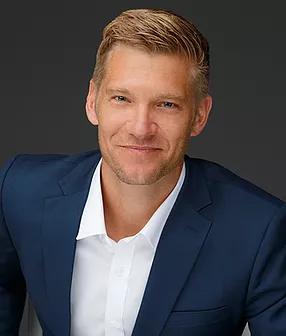



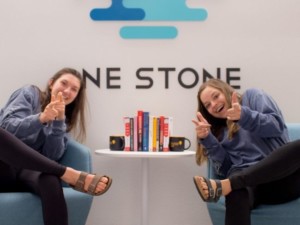
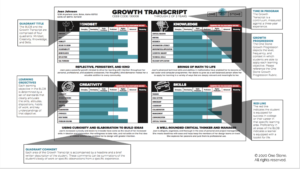
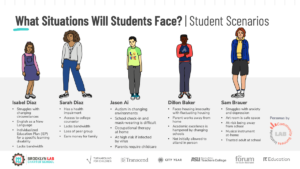
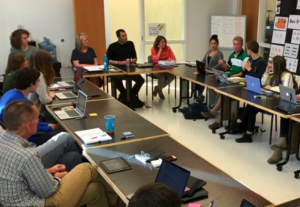
0 Comments
Leave a Comment
Your email address will not be published. All fields are required.